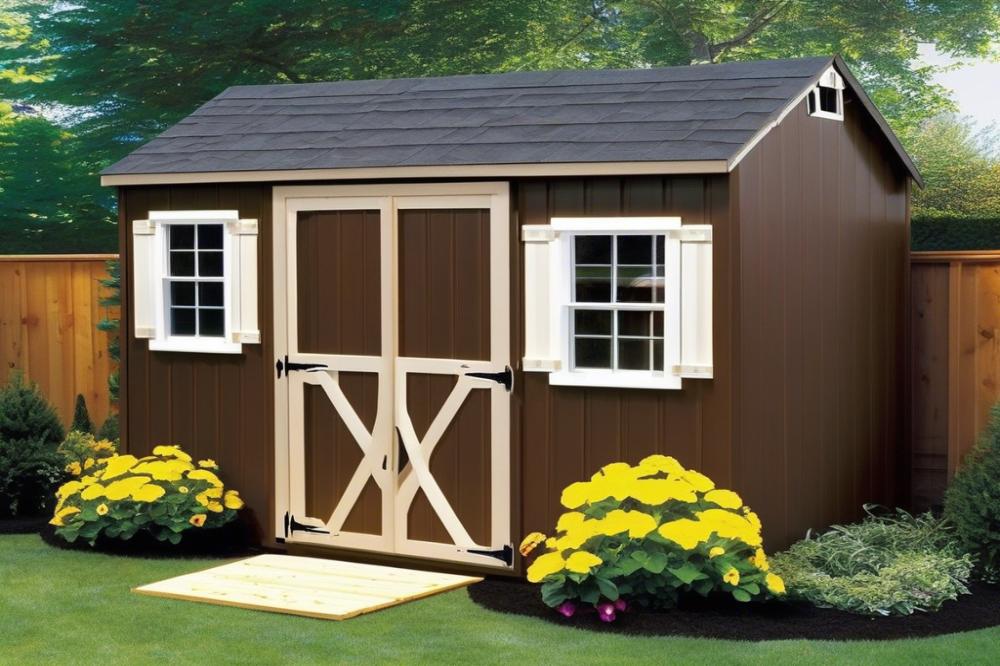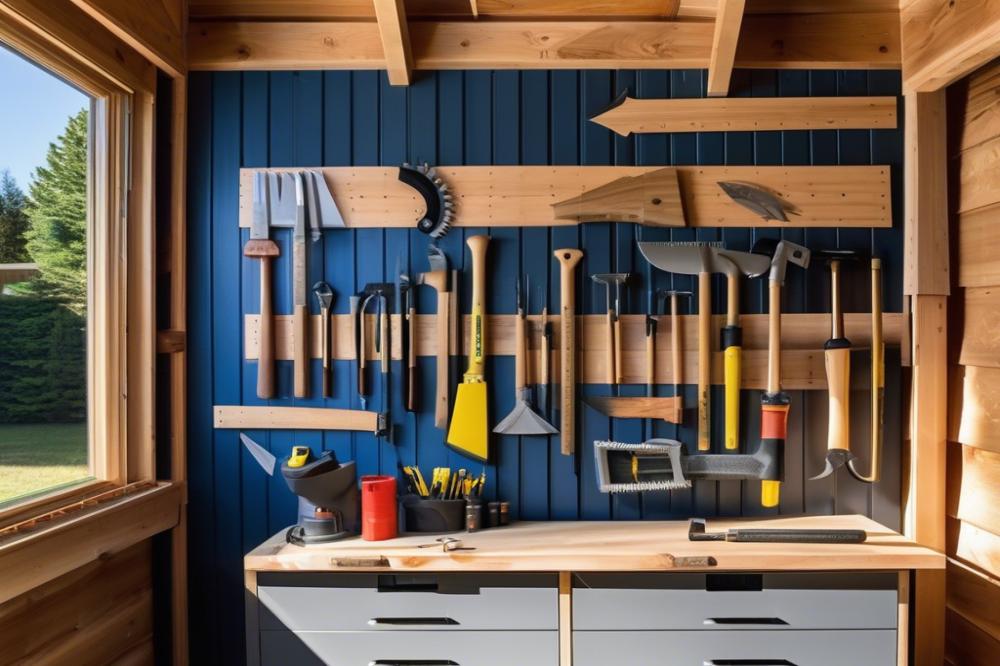Choosing Fasteners and Hardware for Shed Building
Building a shed is an exciting project that enhances your home and provides practical storage solutions. Selecting the right fasteners and hardware is crucial for a successful shed assembly. Properly chosen materials contribute to the durability and stability of your structure. They ensure that everything stays intact through various weather conditions and over time.
In shed construction, several types of materials are commonly used. Wood screws play a significant role for assembling wooden components. They come in various lengths and head styles to fit different needs. bolt sizes vary as well, depending on the thickness of the materials being joined. Choosing appropriate fasteners, such as galvanized fasteners or stainless steel hardware, can protect the shed from rust and deterioration.
Also, consider using construction adhesive for additional bonding strength. This can enhance overall stability in combination with mechanical fasteners. Anchors may be necessary for securing the shed to the ground, especially in windy areas. Don’t overlook the value of brackets; they provide additional support for structural integrity.
Weather-resistant materials are a key focus in shed building fasteners. They withstand moisture and prevent corrosion, which is vital in maintaining the longevity of your shed. The right choice in hardware for sheds can mean the difference between a lasting investment and frequent repairs down the line. Think carefully about each component involved in your project, as every detail makes an impact on the final result.
Understanding shed building fasteners

Fasteners play a vital role in the assembly of any shed. Their main purpose is to hold various parts together securely. This ensures the overall structure is stable and safe. Each piece of a shed, from the walls to the roof, relies on these components for strength. Without the right fasteners, even the best materials can fail.
Different Types of Fasteners Used in shed construction
Numerous types of fasteners are suitable for constructing a shed. Screws are commonly utilized for many applications. They come in various sizes and screw types, making them versatile for different materials. Wood screws, for example, are excellent for attaching wooden panels. They grip firmly, preventing loose joints.
Bolts are another option. These sturdy fasteners come in many sizes and are perfect for heavy-duty applications. When anchoring structural elements, bolts provide the strength needed to withstand stresses. Anchors also play a significant role, especially for securing posts or beams to concrete surfaces.
Brackets add extra support where needed. They help with joining beams or reinforcing corners. Using brackets correctly can enhance the overall strength of a shed. When encountering areas that require robust adhesion, construction adhesive might be a wise choice. This type of glue creates a solid bond and complements fasteners.
Importance of Selecting Quality Fasteners
Choosing quality fasteners cannot be overlooked. Galvanized fasteners are often recommended for outdoor use. Their protective coating helps resist rust and corrosion, which is essential for longevity. Stainless steel hardware serves as an excellent alternative. Known for its strength and rust resistance, this material ensures durability in various weather conditions.
Using subpar fasteners can lead to serious problems. Weak connections may compromise the entire structure. Investing in good hardware and fasteners saves time and money in the long run. Remember, the best materials and designs require support from reliable components. Without proper fastening, a shed’s functionality and safety could be at risk.
Types of Fasteners and Their Applications

Wood screws are a popular choice for shed assembly. They offer strong holding power and are easy to install. Ideal use cases include attaching frame components and securing plywood panels. Their tapered design helps prevent splitting wood, making them suitable for various construction tasks.
screw types vary in design, each serving unique purposes. Phillips head screws are common and allow for good torque while minimizing stripping. Square head screws can provide a better grip and are less likely to slip during installation. Torx head options, known for their star-shaped design, offer excellent resistance against wear and are great for projects that require durability.
Choosing bolt sizes is crucial for the shed’s structural integrity. The bolts must match the thickness of the materials being joined. Small bolts are suitable for lighter components, like hinges and fixtures. Larger bolts provide stability for heavier structures, such as the main supports and cross-bracing.
Galvanized fasteners are advantageous in environments that experience moisture. Their zinc coating protects against rust and decay. This makes them an excellent choice for outdoor structures like sheds. Using galvanization means less worry about the long-term performance of fasteners exposed to rain and humidity.
When considering stainless steel hardware, one must think about specific scenarios. It offers superior resistance to corrosion compared to other materials. This makes it ideal for coastal areas or places with heavy rainfall. Using stainless steel for brackets and anchors can enhance the durability of the shed, ensuring it stands the test of time.
Additionally, construction adhesive can be used alongside these fasteners. It acts as an extra layer of strength, filling gaps and providing stability. Combining screws with adhesive results in a stronger bond that improves the overall integrity of the shed. Weather-resistant materials complement these fasteners, further ensuring that the structure will last.
Choosing Weather-Resistant Materials

Weather-resistant materials play a crucial role in ensuring the durability of your shed. If you want your structure to last for years, using the right fasteners is essential. Moisture, extreme temperatures, and pests can quickly compromise standard materials. Opting for materials designed to resist these elements will save you time and money in the long run.
Various materials and coatings enhance the longevity of your shed’s components. Stainless steel hardware is one of the best choices for outdoor projects. It resists rust and corrosion, making it perfect for areas that experience heavy rainfall. Galvanized fasteners, coated with zinc, also offer good protection against the elements. However, they may not last as long as stainless steel in harsh conditions. Consider using treated wood to add another layer of protection. This wood resists rot and damage from insects, making it an excellent choice for shed assembly.
How to Select Fasteners that Withstand the Elements
Selecting the right fasteners is vital for durability. Start with wood screws specifically designed for outdoor use. These screws often have a special coating to resist rust. Look for screw types that are specifically labeled as weather-resistant. Bolt sizes should also be chosen carefully; larger bolts can provide improved structural integrity. When thinking about anchors and brackets, choose heavy-duty options. They must hold securely despite wind and rain.
Construction adhesive can be an added benefit. This adhesive provides extra strength in areas where screws or bolts may be insufficient. However, not all adhesives are created equal. Always select those that are rated for outdoor use. In summary, by using weather-resistant materials and the right fasteners, you can build a shed that withstands nature’s challenges.
Utilizing Construction Adhesive and Anchors

Benefits of Construction Adhesive in Shed Assembly
Construction adhesive plays a crucial role in shed assembly. It adds strength and stability to the structure. When applied correctly, it can fill gaps between materials, which helps in creating a stronger bond. Using wood screws alone may not provide the needed durability. Adhesive works well with various surfaces, making it versatile for different projects. Some weather-resistant materials react well to many types of adhesives, so choose wisely. In wet conditions, construction adhesive helps resist moisture. This factor is vital to prevent issues later on.
Types of Anchors and Their Use in Securing the Shed to the Foundation
Securely anchoring a shed to its foundation is essential for safety. Various types of anchors exist to meet these needs. Ground anchors are designed to grip into the earth, providing stability. Bolt anchors, on the other hand, are great for fastening directly to concrete pads. When choosing screw types, remember their lengths should suit the thickness of the material they penetrate. Some prefer heavy-duty corrosion-resistant options like galvanized fasteners or stainless steel hardware for added longevity. Additionally, brackets can provide extra reinforcement by connecting different parts of the shed structure.
Guidelines for Effective Use of Adhesive and Anchors
For effective application of construction adhesive, start with a clean surface. Dirt or debris can weaken the bond significantly. Apply the adhesive in a continuous bead for strength. Keep in mind that different adhesives have varying drying times. Be patient; allowing proper cure time maximizes durability. When installing anchors, mark their positions first. This step helps ensure accuracy during the installation process. Use a level to check alignment, as this aids in proper support distribution. Lastly, always check local building codes. Regulations may dictate specific requirements for anchoring and fastening systems in shed construction.
Incorporating Brackets and Other Hardware
When building a shed, incorporating brackets is crucial. There are several types available, such as L-brackets and corner brackets. Each serves a different purpose in construction. L-brackets help secure two surfaces at a right angle, while corner brackets provide extra strength at joints. Furthermore, there are strap brackets that support lengthy framing members. Their use can greatly enhance the stability of your shed.
Additional hardware may be necessary for stability and structural support. Consider using bolts in larger structures. A variety of bolt sizes can meet different needs; larger bolts are often more reliable for heavy loads. For smaller components, wood screws provide a strong hold in wooden pieces. If you’re dealing with outdoor conditions, using galvanized fasteners will prevent rusting.
Weather-resistant materials should be prioritized, especially if your shed is exposed to moisture. Stainless steel hardware is excellent for areas with high humidity. Using construction adhesive can also add strength to your assembly. It’s often helpful to use anchors to secure your shed to the ground, especially for larger structures that may be affected by strong winds.
Choosing the right hardware hinges on the design of your shed. Evaluate how heavy the roof will be. If it’s a flat roof, additional support may be needed. Think about how many shelves or storage spaces will be included. Load-bearing areas, like shelves, should have appropriate brackets to prevent sagging. Remember, each choice of bracket and piece of fastener contributes to the overall function and durability of your shed.
Final Thoughts on Hardware Selection for Shed Building
Choosing the right fasteners and hardware is crucial in any shed building project. The materials you select directly influence the durability and stability of the structure. Failing to use the proper screws, bolts, and other components can lead to issues down the line. Think about how often you will use your shed and what it will store. This consideration will guide your decisions.
In addition, understanding different screw types will provide you with options for various applications. Some screws are designed for wood, while others work better with metal. Likewise, recognizing the appropriate bolt sizes can greatly affect how securely everything holds together. Each hardware piece plays a role in the overall integrity of your shed.
When gathering supplies, don’t rush. Take the time to research and compare different products. Consulting with experts at the hardware store can also help clarify confusing choices. They can recommend adaptations based on specific needs and local weather conditions. Quality materials may cost a bit more, but they will save you from future repairs.
After consideration, think about the environment your shed will be in. Wet or humid places may require corrosion-resistant hardware. Shielding your structure from the elements is vital for long-term success. Always remember, a sturdy shed starts with the right foundation of materials.
In closing, remain focused on selecting hardware that truly meets your project’s needs. Using appropriate fasteners not only strengthens your shed but also enhances its appearance. With careful choices, your shed will last for years. Get excited about your project, and happy building!



